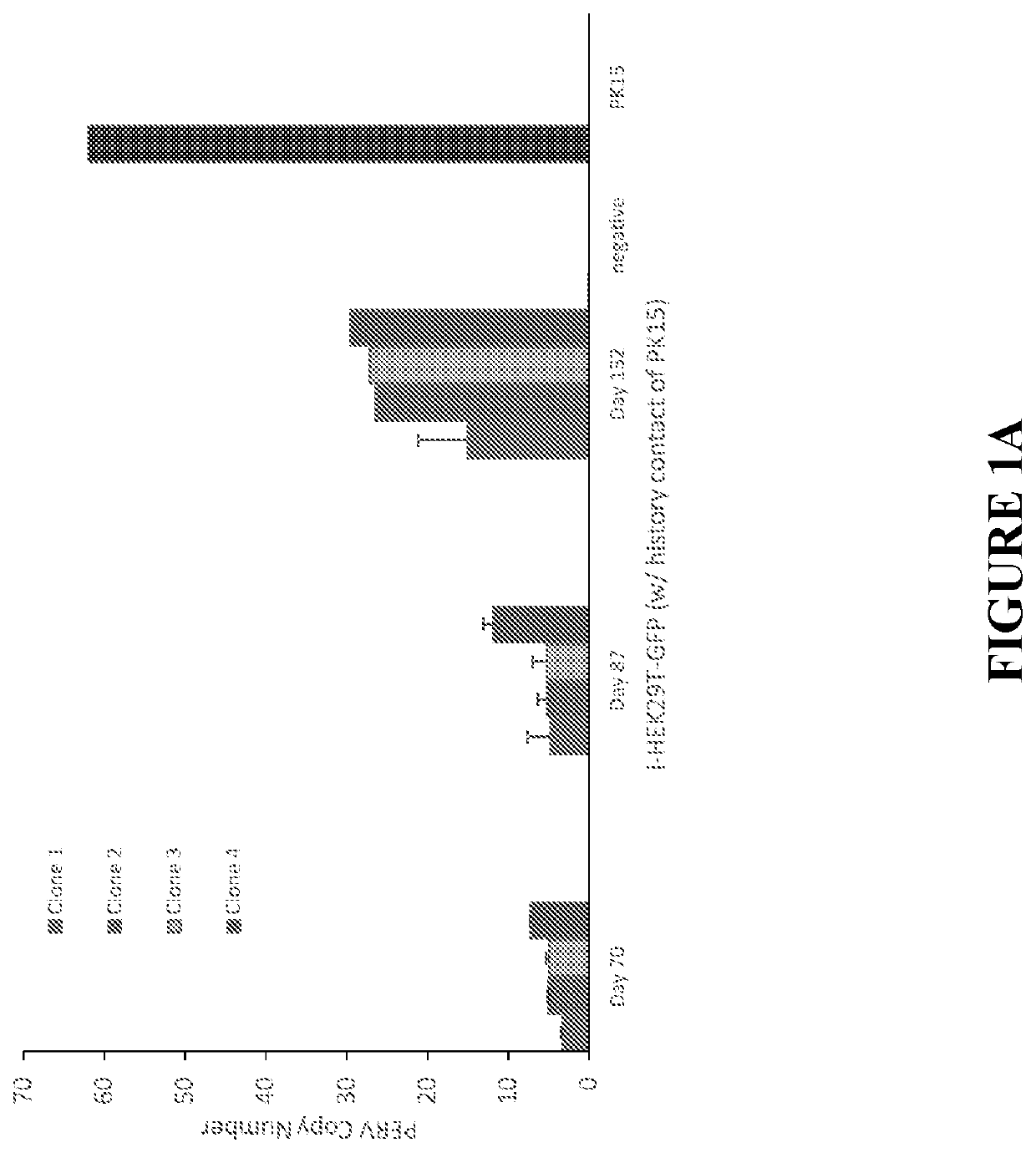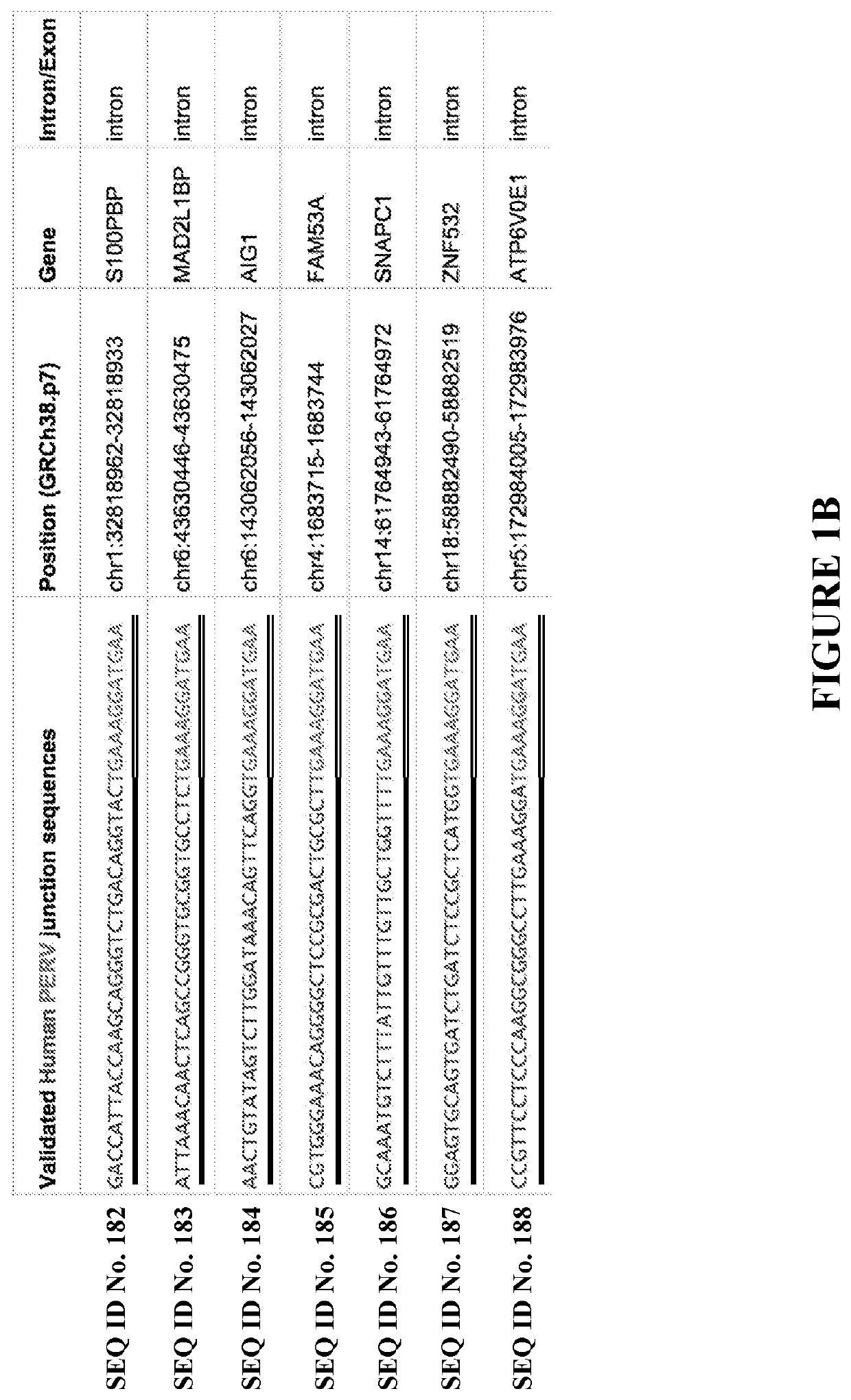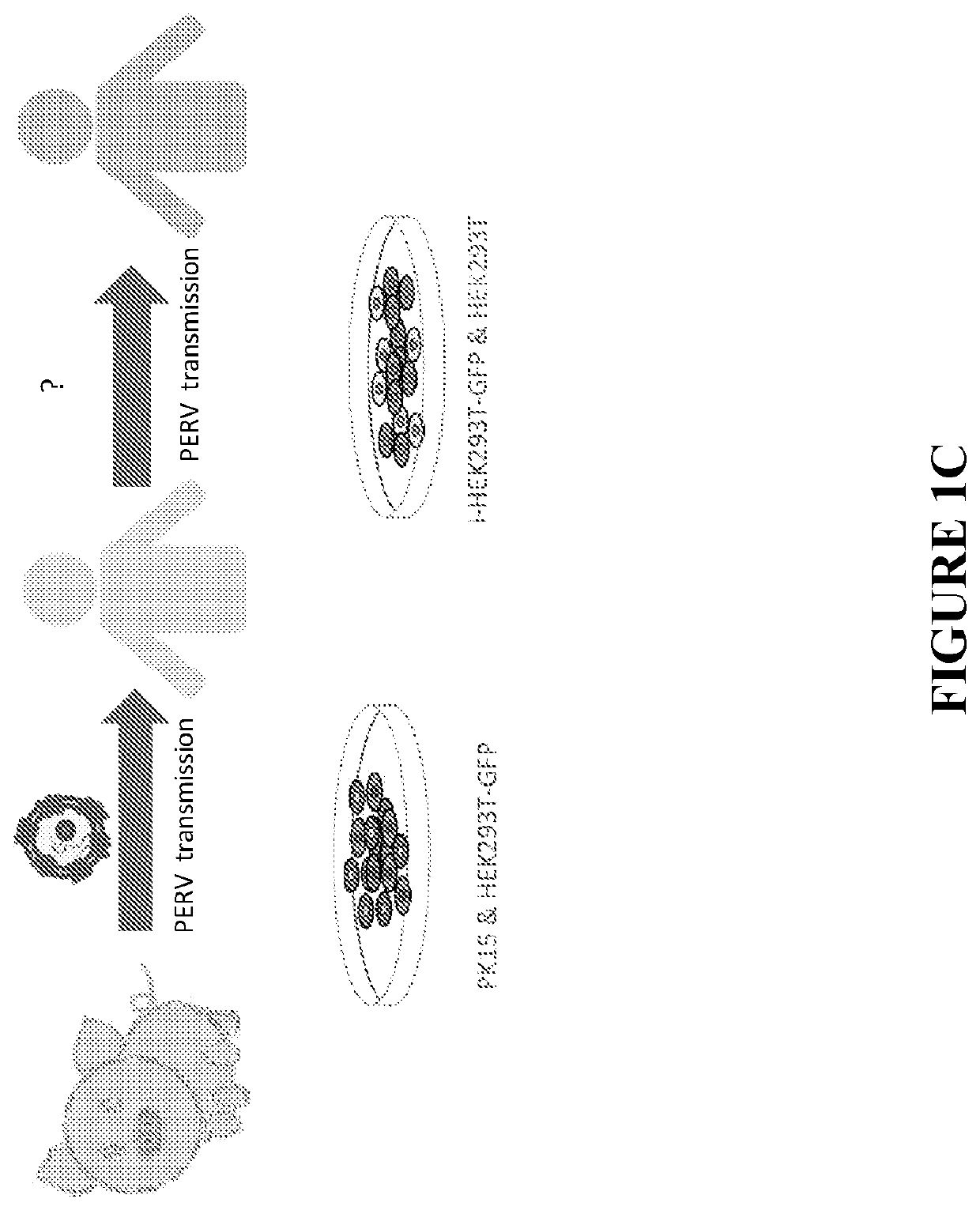Methods for generating genetically modified animals
a technology of genetically modified animals and methods, applied in animal husbandry, biochemistry apparatus and processes, viruses/bacteriophages, etc., can solve the problems of significant unmet medical needs for human organs and tissues for transplantation, impede clinical use of porcine organs, and potential risk of porcine endogenous retroviral (perk) element transmission, so as to prevent or reduce the risk of pregnancy loss or miscarriage. , the effect of reducing the risk of pregnancy loss
- Summary
- Abstract
- Description
- Claims
- Application Information
AI Technical Summary
Benefits of technology
Problems solved by technology
Method used
Image
Examples
example 1
ect, Replicate, and Propagate in Human Cells
[0161]Clinicians have feared that PERVs present in a pig donor organ or tissue could infect the cells of a human host. In order to determine if PERV remained active and propagated in human cells following infection, the PERV copy number was monitored both in a population and in clones of PERV-infected HEK293T-GFP cells (i-HEK293T-GFP) for more than 4 months. The PERV copy number increased over time (FIG. 1A) as determined by droplet digital PCR (ddPCR). There are three major subtypes of PERVs: PERV-A, PERV-B, and PERV-C. Subtypes A and B are ubiquitous and have been reported to be transmittable from pigs to humans, whereas subtype C is only present in some pig strains and can only be transmitted among pigs (Patience et al., 2001, J. Virol., 75, 2771-5). Consistent with previous reports, PERV-A and PERV-B were detected in the infected human cells (data not shown), confirming that they are human-tropic. However, PERV-C was not detected in ei...
example 2
Primary Porcine Cells
[0163]Generating PERV-free pigs involves production of primary porcine cells devoid of PERV activity, which can be cloned via somatic cell nuclear transfer (SCNT) to produce porcine embryos. The porcine fetal fibroblast cell line (FFF3) was selected to be modified to create PERV-free primary porcine cells. First, PERVs present in the FFF3 genome were mapped and characterized. The copy number of functional PERVs was estimated to be ˜25, as determined by ddPCR on the reverse transcriptase (pol) gene (data not shown). The estimated PERV copy number was close to the sum of 10 copies of the PERV-A env gene, 14 copies of the PERV-B env gene, and 0 copies of the PERV-C env gene which was identified in the genome (data not shown). Using whole genome sequencing, one copy of truncated PERV-B was detected. This truncated PERV-B was previously not detectable by ddPCR (data not shown).
[0164]PacBio long-reads genome sequencing (N50=2,439 bp) were performed after PERVs-specifi...
example 3
Embryos
[0168]Having obtained FFF3 cells with 100% eradication of PERV activity, PERV-free embryos were then produced using SCNT. Using hand-made pig cloning (Du et al., 2007, Theriogenology, 68:1104-10), porcine embryos with 50-78% efficiency were successfully cloned. These embryos grew for seven days in culture and reached blastocyst stage. Normal blastocyst structure was observed. Furthermore, the pluripotency of inner cell mass (SOX2+) was validated on day 7 (FIG. 3A).
[0169]Using the PERV-free FFF3 cell line, additional rounds of pig cloning were conducted through somatic cell nuclear transfer, and implanted in surrogate mothers (250 embryos transferred). At day 49 after embryo transfer, the fetuses were collected from one surrogate sow by C-section. Four live fetuses were isolated from the sow. The PERV inactivation levels and PERV copy number were checked by ddPCR. The results showed there is no reinfection of PERV in the fetuses produced from the PERV-free cell line (FIG. 3B)....
PUM
| Property | Measurement | Unit |
|---|---|---|
| Fraction | aaaaa | aaaaa |
| Fraction | aaaaa | aaaaa |
| Fraction | aaaaa | aaaaa |
Abstract
Description
Claims
Application Information
 Login to View More
Login to View More - R&D
- Intellectual Property
- Life Sciences
- Materials
- Tech Scout
- Unparalleled Data Quality
- Higher Quality Content
- 60% Fewer Hallucinations
Browse by: Latest US Patents, China's latest patents, Technical Efficacy Thesaurus, Application Domain, Technology Topic, Popular Technical Reports.
© 2025 PatSnap. All rights reserved.Legal|Privacy policy|Modern Slavery Act Transparency Statement|Sitemap|About US| Contact US: help@patsnap.com



